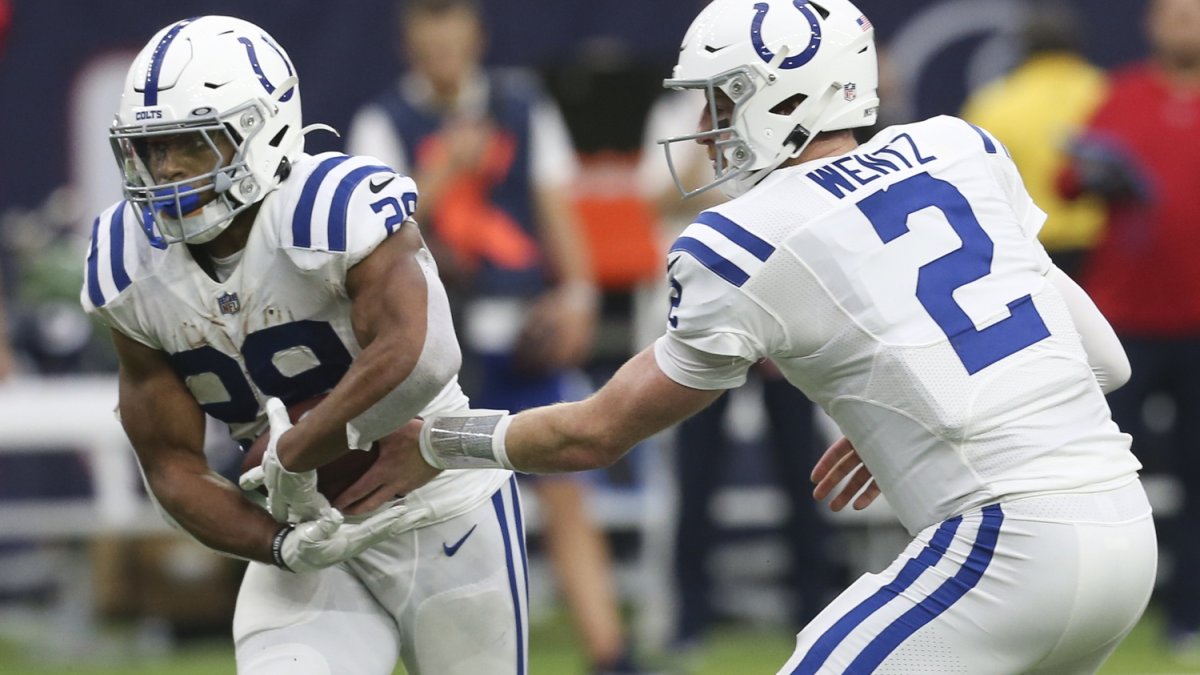It’s crazy to think that the 2021 NFL regular season is down to its final two weeks, a season that has given us more to chew on than any in recent memory. Defenses have adjusted to an onslaught of innovation on the offensive side of the ball, and scoring is down (some of this can be attributed to quarterbacks missing time, but not all of it).
One such offensive invention over the past decade is run-pass options. Unlike play action, run-pass options (RPOs) are generally thought of as plays that are called runs in the huddle, with the quarterback having the choice to pull the ball out of the running back's belly and throw a quick pass if the defense dictates. As former Chiefs All-Pro lineman Mitchell Schwartz chronicled on The Athletic Football Show, many teams consider the success or failures of these plays those of the run game. However, traditional play-by-play data treats RPO passes and passes just the same.
Click here for more PFF tools:
Rankings & Projections | WR/CB Matchup Chart | NFL & NCAA Betting Dashboards | NFL Player Props Tool | NFL & NCAA Power Rankings
Best Bets Tool
Thus, in this article we’re going to look at how efficient teams have been running and passing the ball, but we'll take special care to separate traditional passes from RPO passes. Essentially, we want to see how efficient a team is when it calls a pass play and how efficient a team is when it calls a run play.
Below is a plot of a team’s success rate and EPA per play on run plays, not including RPO passes (but including RPO runs) — basically, the way it’s always calculated. Only early downs in close games (within 16 points) in the first three quarters of a game are included:

First, it’s our duty to point out how crazy Jonathan Taylor has been from an explosiveness standpoint, as the Indianapolis Colts’ running game is not outlier-like in terms of play-by-play success but still leads the league in EPA (which weighs big plays heavily) on run plays. It's a similar dynamic, although less in terms of magnitude, for the Nick Chubb-led Cleveland Browns. The Houston Texans continue to lead the league in laughs, while the possibly playoff-bound Miami Dolphins have had a really hard time moving the ball on the ground.
We’re just going to mention that the Pittsburgh Steelers drafted a running back in the first round right here.
Now, let’s look at how the dynamic changes when we take RPOs that are passes and add them to one of the mixes, and then take RPOs that are runs out of one of the mixes. First, success rate:

The diagonal line is added here since the X- and Y-axis are both on the same scale. Notice here that, with some exceptions, RPOs generally enhance the outcomes for teams. It’s interesting that, in The Athletic Football Show, Robert Mays and Mitchell Schwartz talked about the Colts’ RPO game as an asset. In reality, it’s actually been a detriment to their run game.

The much-maligned Buffalo Bills running offense gets seen in a new light here, and so does Pittsburgh’s, although to a lesser extent. The skills of Josh Allen and his bevy of wide receivers take the team's running game from a liability to one of the league’s best when viewed this way.
Now, on to EPA:

The dynamic with the Colts is even more pronounced when looking at EPA, but the Bills stand out less — meaning their extra successful plays that are coming from RPO passes are not necessarily explosive plays. The Dolphins, the owners of a current seven-game winning streak, see a big boost here — from one of the worst teams in the NFL to merely a team in the bottom third or so when RPO passes are counted, likely due to the explosive play capabilities of players such as Jaylen Waddle in their offense.
It is interesting that, when viewing runs this way, there’s really only a one-team increase in how many teams average positive EPA on early-down run plays after adding RPO passes into the data. In short, passing — if you can — in the traditional sense (including play action) is still king, and RPOs, while a fun wrinkle to the game over the past few years, are rarely a way to significantly change the water level for an offense in 2021.





 © 2025 PFF - all rights reserved.
© 2025 PFF - all rights reserved.